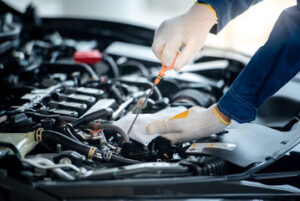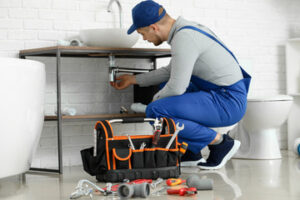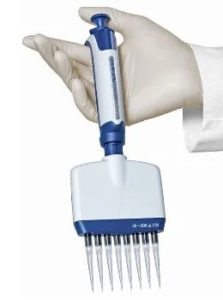San Clemente Auto Repair is not a glamorous job, but it does provide a good salary. It also provides opportunities to learn new skills and advance in the profession.

Be sure to follow the manufacturer’s maintenance schedule. Ask the shop to explain any repairs that it recommends.
Mechanics are skillful tradespersons that examine and inspect vehicles brought into auto repair shops. They often work on different systems within motor vehicles to identify problems, such as transmission issues or faulty electrical components. Mechanics may also use computerized diagnostic tests to help them find the root cause of the problem. Those with strong communication skills are better able to explain their findings and recommended maintenance actions to customers.
Auto mechanics also need to have good time management skills, as they often work on more than one vehicle in a day. This requires them to efficiently and accurately schedule incoming appointments, account for possible deliveries of parts, and ensure that customers get their vehicles back on time.
In addition, auto mechanics should have a good understanding of their tools and equipment. This includes common hand tools, such as jacks and wrenches, as well as more advanced technology like digital scanners and engine management tools. These tools enable mechanics to quickly and accurately pinpoint the source of a problem, allowing them to provide customers with more efficient service.
As the automotive industry changes, so must the skillset of mechanics. Today’s cars feature complex electronics and computer systems that require specialized knowledge to diagnose and fix. This makes it even more important for mechanics to stay up-to-date on the latest technologies and trends in the industry.
Mechanics should also be able to work on various types of equipment and machinery, which are used in industries like manufacturing, construction, agriculture and aviation. These machines are essential for the operations of these industries, and mechanical mechanics play a vital role in keeping them running smoothly.
Although it is not an integral part of their job, some mechanics may choose to specialize in a particular area of the automotive industry. This allows them to build up a reputation as a specialist in their field, and can potentially lead to more business opportunities. For example, some mechanics may focus on repairing suspension systems, while others may specialize in brakes or front-end work. Regardless of their specialization, all mechanics should be willing to learn new skills on the job and stay up-to-date with the latest automotive technology.
Repair Shops
One of the most important parts of an auto repair shop is its ability to provide customers with a transparent process. Clients expect to be able to track the progress of their repairs, including how long they have been sitting in the shop and what parts have been replaced. Transparency allows clients to trust the technicians, staff, and establishment more, while reducing any potential frustration with the auto repair process. This is a great way to build loyalty with clients and increase the number of return visits.
Modern vehicles are equipped with sophisticated safety features designed to protect drivers and passengers in the event of a crash. It is the job of auto repair shops to ensure that these features are functioning properly. This requires a thorough inspection and calibration of the vehicle’s sensors, airbags, seatbelt tensioners, and other safety systems. Auto body shops often work closely with these systems and take great care in their maintenance and repair, making sure that they are functioning as intended.
It is important for car owners to find a reliable auto repair shop that has a good reputation and offers a fair price for their services. It is also important to make sure the shop provides a written estimate before starting any work. This document should identify the condition to be repaired, the parts that will be used, and the labor cost. The shop should also indicate whether the parts will be new, remanufactured, or rebuilt. Some states require that the repair shop disclose this information to the customer.
When choosing a shop, it is important to look for one with a clean facility and friendly staff. It is also important to consider the amount of experience that the staff has and their level of training. It is best to choose a shop with technicians who have experience working on your type of car. This will ensure that they have the knowledge and expertise to fix your vehicle quickly and correctly.
While most auto repair shops are small businesses, they live or die by the quality of their work and the satisfaction of their customers. When a customer brings their vehicle back because the repair was not done correctly, it costs the shop money in lost revenue and additional labor hours. This is why it is important for repair shops to do their best to complete every repair right the first time.
Body Shops
Like going to the dentist for routine checkups preserves your teeth, keeping up with regular appointments with a stand-out auto body shop helps you maintain your vehicle’s appearance and structural integrity over time. A qualified body shop will be familiar with your car’s design and make, allowing them to repair dents, dings, and paint damage with speed and accuracy.
Auto body shops also work on more serious issues like a warped frame caused by a collision. These types of structural repairs require a highly-trained team that can utilize laser frame diagnostic systems and frame machines to get the job done right.
Beyond repairing apparent physical damage, the best body shops will also address any mechanical problems that can arise from a crash, such as worn safety sensors or compromised fenders. This comprehensive approach is vital to ensuring that your vehicle’s important safety features are in working condition in the event of another collision.
Aside from restoring the cosmetic appearance of your car, a talented auto body shop will preserve its resale value. Scratches, dings, and faded paint will dramatically lower the amount of money you can expect to get back when it comes time to trade your car in for a new one.
When choosing a body shop, look for one that offers flexible payment options and a warranty on their work. Additionally, consider how long it will take for them to complete your repairs and whether they can offer a loaner car service while you wait. Lastly, find out if the shop is independent or affiliated with a dealership, as this will impact both their pricing and expertise level.
Finally, pay attention to the customer reviews and reputation of the shop before deciding which one to choose. Ideally, you want to choose a shop with an excellent reputation for fair pricing and fast turnarounds, as well as a high level of transparency and honesty in their customer interactions. When comparing different body shops, it’s worth visiting them in person to see how they compare. This way, you can be confident in selecting the right one for your unique needs and budget.
Paint Shops
While some car owners are very protective of their vehicles and will only use an auto repair shop that specializes in their vehicle, others take a more casual approach to maintenance. While it’s impossible to keep your car in a garage 24/7, good paintwork will help it stand up to the weather and road debris for years. The best place to go for any auto painting needs is a professional body shop that uses premium quality paint. This is important because it protects automobile components and prevents rust from eating away at steel for years to come.
Most reputable body shops include painting as one of the final steps in their collision repairs. The reason is simple: A good paint job revives your car’s appearance and helps it hold up against normal wear and tear. It also boosts your resale value.
Many painters will also offer dent repair and bumper replacement services as well as other auto body work. The goal is to make your car look as good as it did before the accident. In some cases, the paint and dent repair will not be visible, but this can improve your car’s resale value as well.
A paint shop should always follow a proper prep process before spraying a new coat of paint onto your car. This includes cleaning, sanding and masking to remove any imperfections that may be present and protecting areas that will not be painted. It should also include any necessary rust repair. Rust can quickly ruin a vehicle, especially in colder climates where road salt is used regularly to melt snow and ice. If left unchecked, rust can eat through the metal frame of your vehicle, causing dangerous structural damage.
In addition to paint and rust repair, a paint shop should also be able to match your existing car’s color with precision. This is particularly important for modern vehicles with complex frame and unibody structures. Some painters even offer warranties and guarantees on their work. This provides peace of mind and shows that the shop is committed to providing high-quality service.





